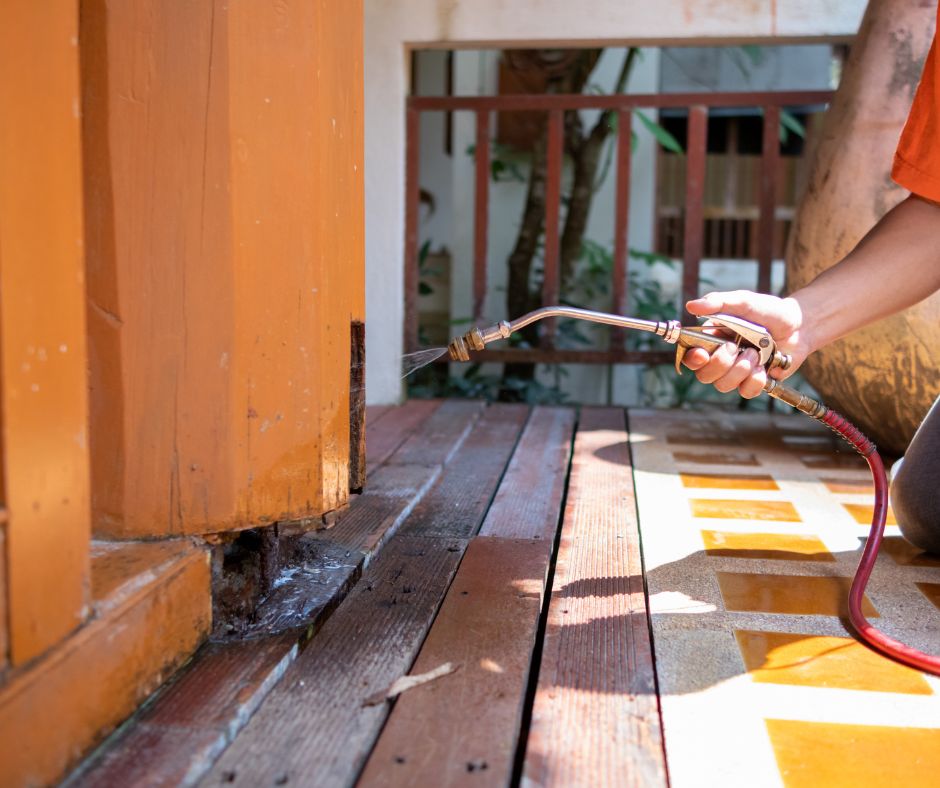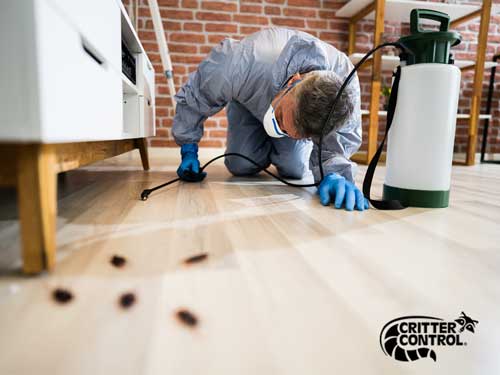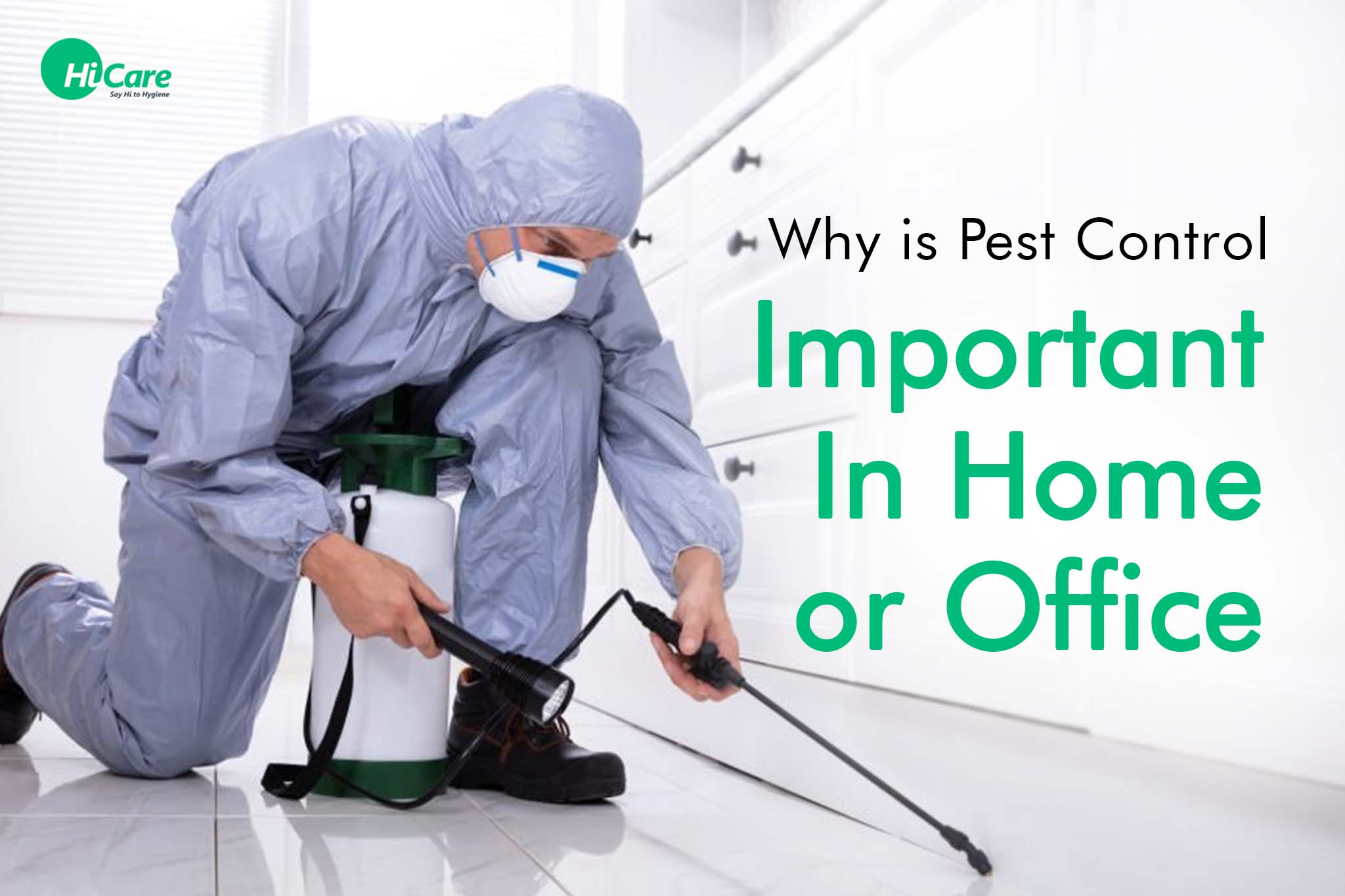Efficient and Swift Bed Bug Exterminator Port Charlotte Services for Stress-Free Living
Learn More About the Most Current Advancements in Bug Control and How to Carry Out Reliable Treatment Solutions
In recent times, the field of bug control has observed considerable advancements, driven by the need for efficient and lasting treatment solutions. Cutting-edge approaches such as Integrated Bug Administration (IPM) combine eco-friendly exercise with sophisticated innovation, boosting both efficiency and environmental duty. Furthermore, the combination of smart innovations and do it yourself techniques has actually empowered individuals to tackle pest concerns much more efficiently. As we explore these advancements, it ends up being crucial to recognize just how ideal to implement these approaches in various setups to achieve optimal results. The effects for insect administration methods might be transformative.
Eco-Friendly Pest Control Options
In the last few years, the demand for environment-friendly parasite control alternatives has actually surged as house owners and companies alike look for sustainable choices to conventional chemical treatments. This change is driven by growing ecological recognition and a desire to reduce the wellness dangers associated with artificial chemicals.

Environment-friendly pest control methods include a variety of methods that focus on making use of natural substances and practices. Integrated Parasite Administration (IPM) is one such strategy, integrating organic, cultural, and mechanical tactics to handle insect populaces while decreasing dependence on chemicals (Wildlife removal services). This alternative method highlights avoidance with environment adjustment and the introduction of natural predators, therefore cultivating a balanced environment
Another preferred option is making use of organic chemicals stemmed from plants, which tend to be much less dangerous to non-target microorganisms. Products like neem oil and diatomaceous planet have gained traction for their effectiveness in managing insects while posturing marginal threats to human wellness and the atmosphere.
Additionally, exemption strategies, such as sealing entrance factors and keeping cleanliness, play a crucial function in environment-friendly parasite management. By embracing these lasting methods, individuals and organizations can successfully handle parasites while advertising a healthier world for future generations.
Smart Technology in Bug Management
Technology is improving the landscape of pest monitoring, with smart technology emerging as a crucial force in improving efficiency and efficiency - Wildlife removal services. The combination of Web of Things (IoT) gadgets, expert system (AI), and information analytics is changing exactly how parasite control professionals approach infestations
Smart catches geared up with sensing units can identify pest activity in real-time, sending out immediate signals to operators. This enables prompt reactions, decreasing damage and reducing the demand for comprehensive therapies. In addition, AI formulas examine historical information to forecast parasite actions, enabling positive interventions based on environmental conditions and infestation patterns.
Drones and automated automobiles are additionally playing a considerable duty in parasite management, supplying aerial assessments of big locations, recognizing hotspots, and even distributing targeted treatments. These modern technologies not just simplify operations but likewise improve security by limiting human direct exposure to possibly hazardous chemicals.
Furthermore, mobile applications equip customers to monitor insect activity and access professional guidance, promoting a joint strategy to pest monitoring. In general, the adoption of wise technology is establishing a brand-new standard in pest control, emphasizing data-driven decisions and sustainable techniques that inevitably profit both home owners and experts alike.
Integrated Pest Management Approaches
Integrated Pest Monitoring (IPM) utilizes a holistic strategy to pest control, integrating different approaches to effectively take care of insect populaces while reducing dangers to human health and the environment. IPM focuses on comprehending the pest life process, their all-natural enemies, and the community in which they flourish.
One of the basic elements of IPM is keeping track of pest populations through regular assessments and data collection. This enables for the identification of insect limits, establishing when treatment is required. Cultural methods, such as plant turning, hygiene, and habitat adjustment, are important in lowering bug frequency and advertising plant wellness.
Mechanical controls, including obstacles and catches, are additionally essential in IPM. These methods can literally get rid of or hinder insects without the usage of chemicals. When required, the wise application of chemical visit their website controls is used, concentrating on targeted therapies that reduce environmental impact.
Education and collaboration amongst stakeholders, consisting of farmers, insect control experts, and the neighborhood, are crucial for the successful implementation of IPM strategies. By prioritizing lasting practices, IPM not only addresses pest issues but likewise promotes a healthier community.
Biological Control Methods
Various organic control approaches are significantly identified for their efficiency in taking care of insect populations while advertising ecological equilibrium. These approaches harness natural predators, bloodsuckers, and microorganisms to lower pest numbers without counting on artificial chemicals. For instance, the introduction of ladybugs can effectively control aphid populations, while nematodes target soil-dwelling bug larvae.
Furthermore, using microbial chemicals, such as Bacillus thuringiensis (Bt), supplies an eco-friendly option for handling caterpillar parasites. These products specifically target pest types, decreasing injury to valuable bugs and pollinators. Preservation organic control highlights improving habitats for all-natural opponents, such as birds and valuable bugs, thus encouraging their existence in agricultural systems.
Research remains to expose innovative methods within this area, such as using scents to interfere with pest mating patterns or the growth of biocontrol this hyperlink representatives through genetic modification. Executing these approaches can lead to sustainable pest management practices that minimize the reliance on chemical treatments, ultimately promoting much healthier ecological communities. As understanding of these methods grows, they are coming to be important elements of incorporated insect administration (IPM) methods, providing an equilibrium between efficient bug control and ecological stewardship.
DIY Parasite Control Solutions
As homeowners seek effective ways to take on parasite concerns, do it yourself pest control remedies have actually acquired popularity for their access and cost-effectiveness. These techniques empower individuals to address invasions making use of readily offered materials and strategies, often without the requirement for expert intervention.

Furthermore, keeping appropriate cleanliness and normal assessments can protect against bug access and nesting (Wildlife removal services). Straightforward techniques, such as sealing fractures, removing food resources, and decluttering, can considerably reduce parasite populations. Catches, both homemade and readily readily available, can also use reliable remedies for monitoring and regulating specific insects like pests or rats

Final Thought
The integration of environmentally friendly bug control options, smart innovation, and ingenious monitoring methods offers a detailed method to reliable pest administration. By embracing Integrated Bug Management (IPM) and making use of biological control techniques, along with Do it yourself solutions, sustainable and liable pest control can be accomplished.
Environmentally friendly parasite control techniques incorporate a range of strategies that focus on the use of natural compounds and techniques. Integrated Pest Monitoring (IPM) is one such strategy, integrating biological, cultural, and mechanical tactics to handle bug populaces while minimizing reliance on chemicals. As recognition of these techniques grows, they are ending up being integral components of incorporated bug monitoring (IPM) techniques, supplying an equilibrium in between effective bug control and environmental stewardship.
The integration of green pest control alternatives, clever modern technology, and ingenious administration techniques offers a comprehensive strategy to reliable parasite administration. By accepting Integrated Bug Administration (IPM) and utilizing organic control approaches, together with DIY services, liable and sustainable parasite control can be achieved.